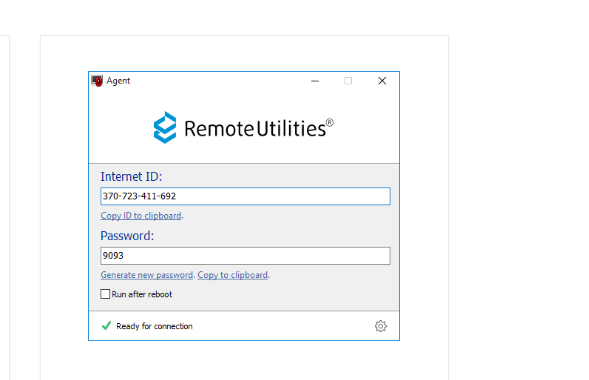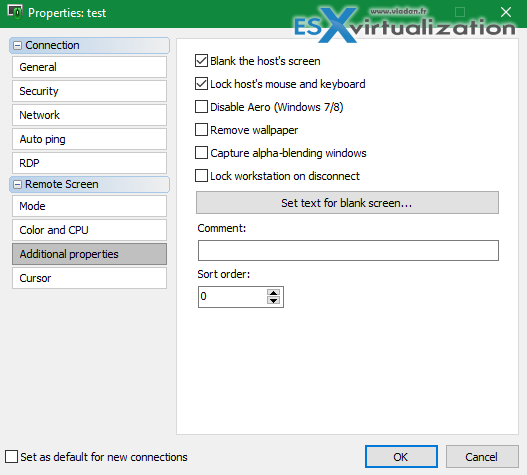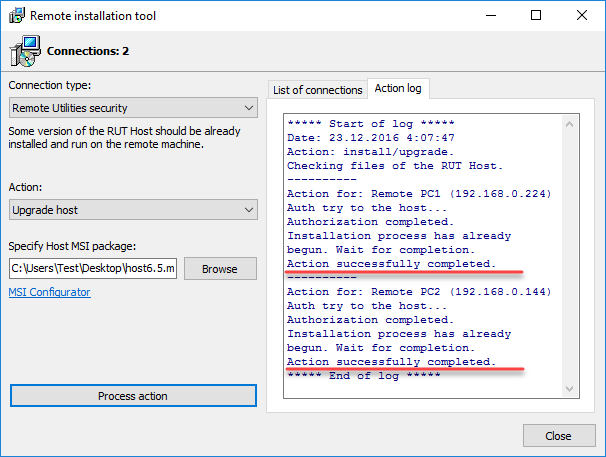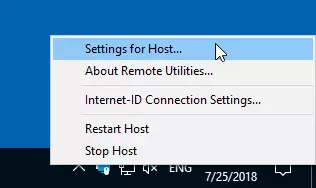

- #Remove remote utilities install#
- #Remove remote utilities pro#
- #Remove remote utilities code#
This object contains evidence of interacting with an Internet Relay Chat (IRC) server. Any process can act as both a server and a client, allowing information to be sent to or from the affected system. A named pipe is used for communication between a server and clients. Malware uses this as a method of communication and to transfer information collected from the system (exfiltrate data). This object imports functions that allow the manipulation of named pipes. Determining what version and types of programs are installed on a device can easily be found from a file listing the malware creator could then attempt to find further vulnerabilities in the installed software. Malware uses this list to look for sensitive data or to find further points of attack.  This object imports functions that are used to list files. Malware uses this to locate processes to inject into, imitate, or terminate. This object imports functions that can list all of the running processes on a system. Malware uses this to capture and save keystrokes to find sensitive information such as usernames and passwords. This object imports functions that can capture and log keystrokes from the keyboard. Malware uses this to better tailor further attacks (to take advantage of OS exploits) and to report information back to a controller. This object imports functions that are used to gather information about the current operating system. For example, the suspicious data "thisisabot" can be concealed by encoding it as "dGhpc2lzYWJvdA=" using Base64. Malware often uses Base64 to avoid detection. Base64 is an encoding scheme used to represent data as ASCII text typically consisting of A-Z, a-z, 0-9, +, and /. This object contains evidence of using Base64 encoding.
This object imports functions that are used to list files. Malware uses this to locate processes to inject into, imitate, or terminate. This object imports functions that can list all of the running processes on a system. Malware uses this to capture and save keystrokes to find sensitive information such as usernames and passwords. This object imports functions that can capture and log keystrokes from the keyboard. Malware uses this to better tailor further attacks (to take advantage of OS exploits) and to report information back to a controller. This object imports functions that are used to gather information about the current operating system. For example, the suspicious data "thisisabot" can be concealed by encoding it as "dGhpc2lzYWJvdA=" using Base64. Malware often uses Base64 to avoid detection. Base64 is an encoding scheme used to represent data as ASCII text typically consisting of A-Z, a-z, 0-9, +, and /. This object contains evidence of using Base64 encoding. 
If no exception is caught, the malware knows a debugger probably caught the exception and that a debugger is being used. Example: Malware might be designed to set up a custom exception handler, raise an exception, and then check if the custom exception handler catches it.
#Remove remote utilities code#
Malware does this to make standard dynamic code analysis difficult to follow.
This object imports functions used to raise exceptions within a program. In case you're curious, here are the high level Threat Indicators. We cannot globally whitelist the program as that is not how our product works, but we have reclassified it as Dual Use/Remote Access for our users to see. #Remove remote utilities pro#
We wouldn't want some non-IT pro installing this on the machine. While the mathmatics sees this, individual users will be able to whitelist it for specific groups to utilize. Why? Simply put, the nature of the program (remote access tool) means it can be used maliciously. I have run this against the latest version of Cylance and it did indeed block it. I saw this, I said no, so the program is still on her system.I am going to look into this and get a report as to why. Uninstall Programs tool, but when I told it to uninstall this program, it appeared to be using Tech2TechSupport's own uninstall program - I knew this because User Account Control (she has Win7) asked if I wanted to let this program modify her system.
#Remove remote utilities install#
One of these was called PC Performance Booster, which was from Tech2TechSupport and which my neighbor told me she saw them install when they had control of her system. I also wanted to remove any newly installed programs. I went to her house and ran the Microsoft Safety Scanner, which did not turn up anything. I got her to cancel her credit card and change her email password.įortunately, she does not keep any financial info on her PC, nor does she bank via internet, so there was nothing to be concerned about there. She let them onto her computer and ended up paying them over $200 via credit card.

I spent a few hours today helping a neighbor who was taken in by the Microsoft Support telephone scam.








 0 kommentar(er)
0 kommentar(er)
